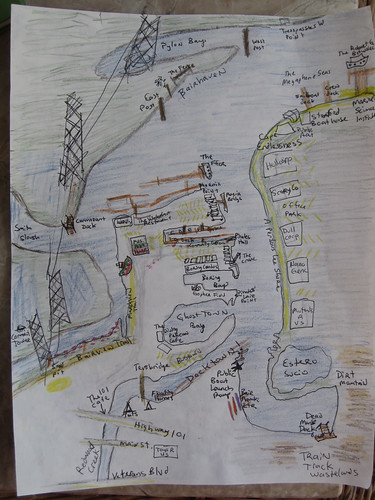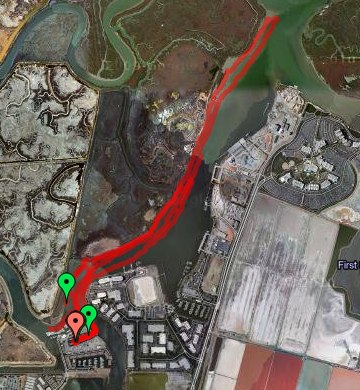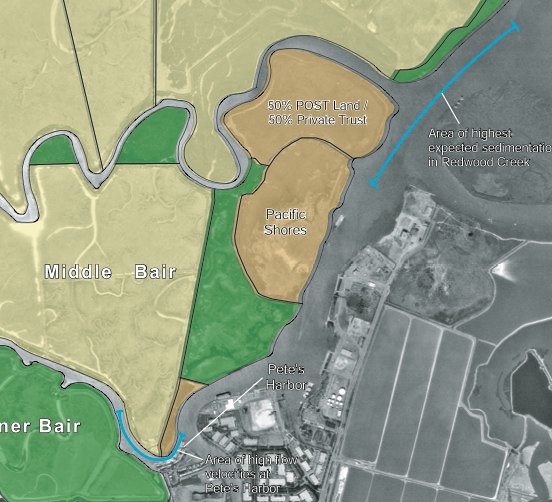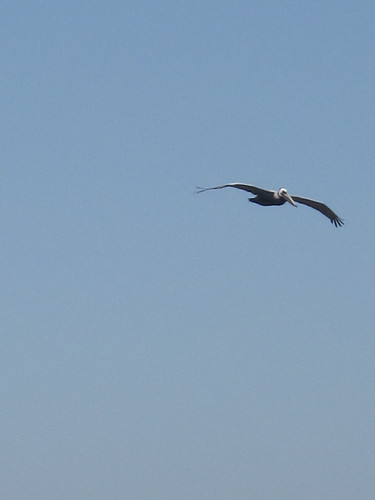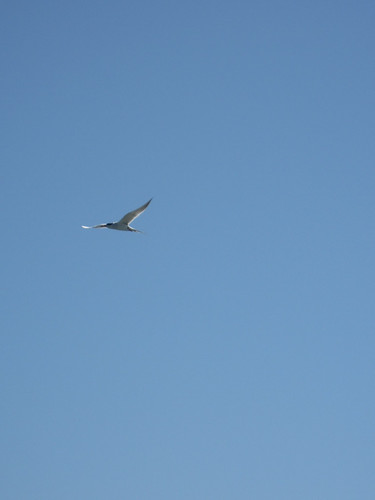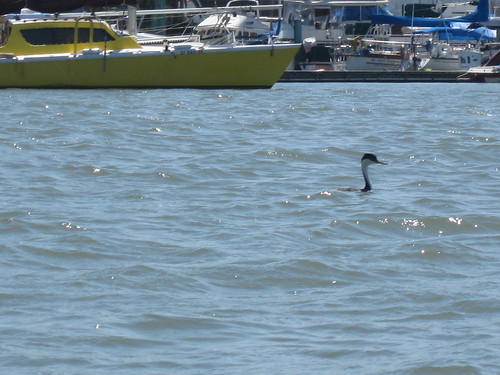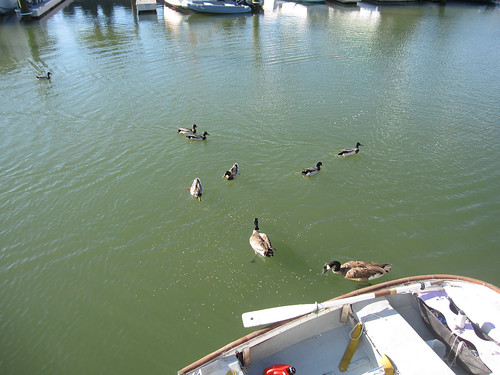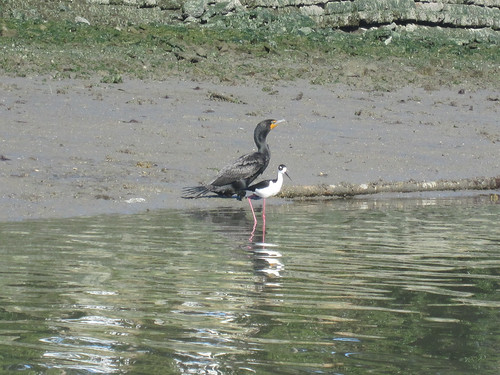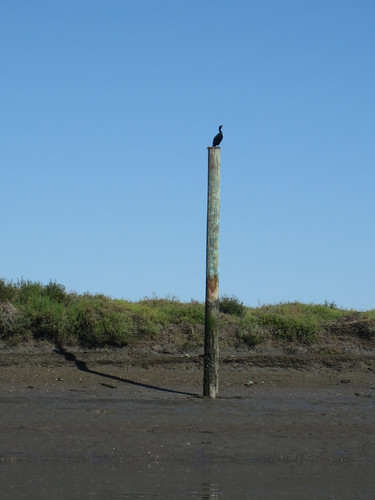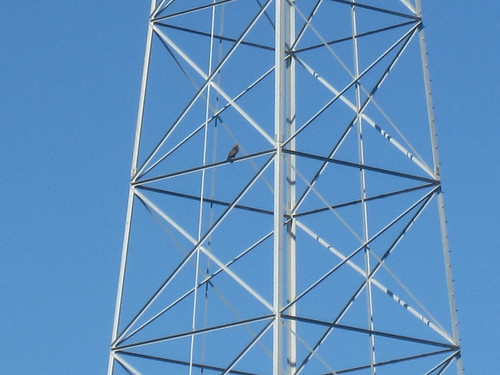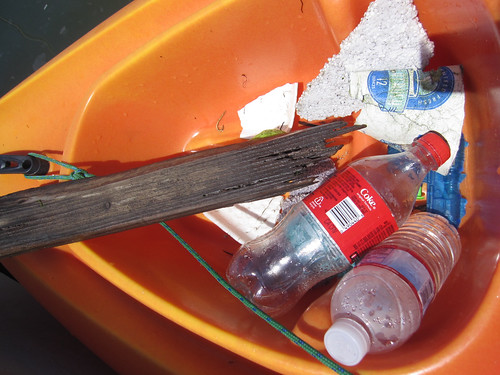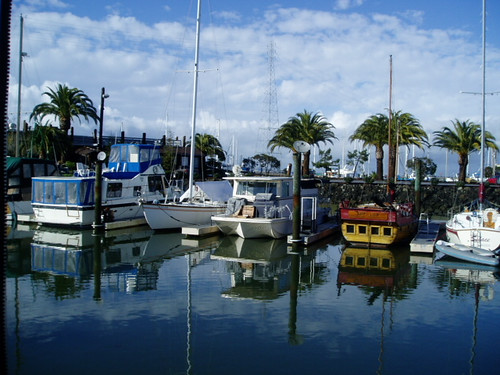What it might mean to make maps
We have now mapped the tiny corner of our creek and given names to nameless places, extending human dominion to yet another junkyard and mudflat.
As I kayaked around with my friend Adina she babbled to me charmingly of how we were in the same place but in a different place. Everything about the land and the water became different because we were on the water looking at the land. I agree! Distances open up hugely and pinch themselves up into almost nothing depending on the wind and current and tide. The parking lot of an office, a boring place, turns out to be the best fishing spot on the creek, full of families hanging off their truck tailgates.
Many of my names for the creek are jokes but they reflect the way we are using the creek as kayakers and what we think is important. The places where trash collects, the strength of the current, the mudflats, the sticks and pilings and pylons that are landmarks, the place where the grebes hang out, the wind shadow of Middle Bair Island.
We remap our minds by traversing the edge of the known map. I was thinking about frontiers, wastelands, and edges. At Open Source Bridge I said some stuff about wastelands. When you hear a place described as empty, reach for your gun. Just kidding. No, when you hear a place described as empty, you can be sure someone is exploiting it. The desert, the wasteland, and the frontier, are obfuscations.
So in my naming of these places I open up different possibilities of exploitation, but since no space is unnamed and unobserved — they are named and observed and mapped by governments and corporations — I would prefer that they be named and observed in a decentralized way by anyone at all. (Which is one reason I adore Open Street Map and Open Sea Map.)
As I look back on the history of Bair Island and Redwood Creek I keep finding ghost places – like “South Shores” which was an attempt by a developer to rename the slough as a suburban extension of “Redwood Shores”. Or like Deepwater Slough, which still has a faint track on the satellite photo – the C shaped trace that loops across Middle Bair, across from the Port – the dredged mud and pickleweed it encloses still privately owned and still named “Pacific Shores” probably for some totally screwed up future condo development scheme.
The Bair Island history, its battles, and its 2006 EIR are all deep background good for anyone interested in the proposed 12,000 household development of the wetlands-turned-salt-ponds owned by Cargill. On the maps they’re the pink rectangular areas that barely even look like bay anymore.
A neighbor of mine across the harbor is gearing up for that battle on another blog, Virtual Saltworks. The ponds are still part of the bay and still supposed to be open space and wetlands. We could use a little bit of digging into maps and history – what was First Slough like before it was diked? What would it take to restore it at least to the state that Bair Island and Corkscrew Slough are in now?
Soon the abandoned docks and the piers for electric company access to overhead cables will be decorated underneath by pirate mailboxes where Milo and I will leave secret messages for the world.
I have some great ideas for Community Kayaks. They’d be like the civic projects for free bicycles anyone can use without fuss. It would be very easy and cheap to start and maintain a simple flotilla of boats free for anyone to use. More local people would use Redwood Creek, would see the edge of our town, the cultivated-wild places that exist right next to the industrial port where oceangoing cargo vessels offload their gypsum, sand, and gravel and load up clanking waterfalls of scrap metal. People barely care about the Creek because they don’t know it’s there. If they paddled around on it they might get fond of it.
I got a little obsessed with the Alviso boat ramp opening. If you live in Redwood City – do you know where the public boat launch ramps are? There are two that I know of!
What is the Bay for? Who gets to go on it? You shouldn’t have to be rich – or go on a giant ferryboat – or treat it like a sort of horrible wet golf course –
Where are my beautiful floating islands made of trash and full of ecological minded Burning Man hippies cultivating flats of pickleweed and nesting habitats for Caspian Terns? I also imagine a beautiful anarchosocialist cooperative marina with art projects and rogue marine science. It would be easy for us here in the harbor to be monitoring water quality, observing the plants and birds and fish, and so on. Decentralized maps and some kind of visionary open data project could make for some great open source science – I’m sure someone’s doing this already.
